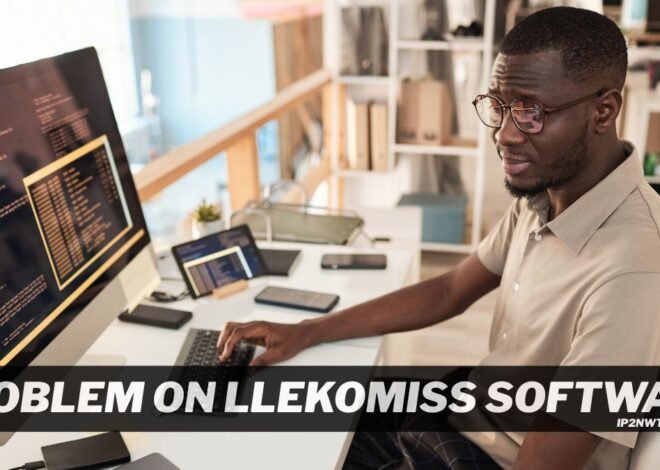
Ftasiatrading Technology: A Deep Dive into Innovation and Global Impact
Introduction:
When you hear the phrase ftasiatrading technology, it might sound like a complex concept tucked away in the world of finance and digital innovation. But the truth is, this technology has become a key player in shaping how global trade, investment, and digital platforms interact today. From influencing financial strategies to driving digital advancements, ftasiatrading technology isn’t just a buzzword—it’s part of the larger story of how our economy is evolving.
In this article, we’ll explore every aspect of ftasiatrading technology. We’ll unpack its meaning, relevance, practical applications, and the way it’s transforming industries. And don’t worry, we’ll keep things casual, clear, and structured so you feel like you’re learning from an expert friend rather than reading a textbook. By the end, you’ll understand why ftasiatrading technology matters and how it might even influence your personal or business decisions.
Understanding the Core of Ftasiatrading Technology
The Meaning Behind the Term
At its heart, ftasiatrading technology blends two powerful concepts: financial trading systems and cutting-edge technology. It focuses on tools, platforms, and processes that enhance how businesses, investors, and even governments interact with financial markets in Asia and beyond. The “FT” often points toward “Financial Technology,” while the “Asia Trading” segment reflects its geographic and strategic emphasis.
What makes ftasiatrading technology stand out is its ability to combine speed, accuracy, and automation in environments that previously relied heavily on manual processes. Trading in financial markets is fast-paced, and any delay can result in significant losses. By integrating advanced technologies—such as artificial intelligence (AI), blockchain, and predictive analytics—this technology enables smarter, faster, and more secure decisions.
More Than Just Numbers on a Screen
When people think about trading, they often picture stock tickers, graphs, and financial charts. But ftasiatrading technology goes beyond that. It isn’t limited to financial institutions—it extends to logistics, supply chains, and even e-commerce. Businesses that rely on imports and exports use these technologies to manage currency exchanges, hedge risks, and optimize international trade routes.
This means we’re not just talking about Wall Street or Asian stock markets. We’re talking about a system that touches your everyday life. For example, the price of your favorite imported coffee might be influenced by how well these systems predict and manage currency fluctuations between countries.
The Global Influence
Another critical element to note is that while the focus may be Asia, the impact is global. Ftasiatrading technology connects markets across continents, creating a smoother, more transparent system for global trade. From small startups to multinational corporations, anyone involved in cross-border transactions can benefit from the infrastructure these technologies provide.
The Evolution of Trading Technology
From Paper to Pixels
Trading has come a long way. Not too long ago, deals were sealed with paper contracts, phone calls, and face-to-face meetings. While that traditional approach had its merits, it was time-consuming and vulnerable to human error. The introduction of computers and internet connectivity transformed this landscape. Suddenly, trading could happen instantly, with digital records and automated systems handling much of the workload.
Ftasiatrading technology is the next step in this evolution. It builds upon earlier systems by integrating modern tools like cloud computing and artificial intelligence. Instead of merely digitizing paper-based processes, it creates a smarter ecosystem where data is analyzed in real time, risks are minimized, and opportunities are maximized.
The Role of Data in Transformation
Data has become the lifeblood of trading. Every second, markets generate massive amounts of information—prices, volumes, trends, and global events that could shift everything in an instant. Ftasiatrading technology thrives on this data. By leveraging machine learning and big data analytics, it turns overwhelming streams of numbers into actionable insights.
For example, if there’s a political shift in an Asian country that could impact currency stability, ftasiatrading technology can flag this risk instantly. Traders and businesses can then adjust strategies accordingly, rather than reacting too late. This proactive approach is what sets the new era of trading apart.
Automation and Algorithms
Algorithms may sound intimidating, but they’re essentially just sets of rules that guide decision-making. In trading, algorithms can process thousands of variables in seconds to recommend or even execute trades. Ftasiatrading technology uses algorithmic trading to achieve efficiency that human traders simply can’t match.
Automation reduces errors, saves time, and ensures that decisions are based on logic rather than emotion. While human oversight is still necessary, automation allows traders to focus on strategy rather than routine execution. This synergy between human intelligence and machine efficiency is the foundation of modern trading.
Key Features of Ftasiatrading Technology
Speed and Efficiency
One of the hallmarks of ftasiatrading technology is speed. Markets can change in milliseconds, and being even slightly late to act can mean the difference between profit and loss. This technology ensures transactions are executed almost instantly, creating a competitive advantage for users.
But speed isn’t just about execution—it’s also about analysis. Systems powered by AI can scan news outlets, social media, and financial databases to detect emerging trends in real time. This level of efficiency empowers businesses and investors to stay ahead of the curve.
Transparency and Security
With great opportunity comes risk. Financial trading has always been vulnerable to fraud, manipulation, and cyber threats. Ftasiatrading technology addresses these concerns with blockchain integration, which creates transparent, tamper-proof records of transactions. This not only builds trust but also strengthens compliance with international regulations.
Security features often include advanced encryption, multi-factor authentication, and real-time monitoring of transactions. By reducing vulnerabilities, the technology helps users feel confident about engaging in global financial systems.
Accessibility and Inclusivity
Perhaps one of the most exciting aspects of ftasiatrading technology is how it lowers barriers to entry. In the past, access to trading systems was limited to major financial institutions. Today, smaller businesses, startups, and even individual investors can tap into these tools.
This democratization of trading technology is reshaping the playing field. Entrepreneurs in developing nations can now participate in global trade with fewer hurdles. By leveling the field, ftasiatrading technology not only drives business growth but also contributes to economic inclusivity.
Practical Applications in the Real World
For Financial Institutions
Banks, investment firms, and hedge funds are among the biggest users of ftasiatrading technology. They employ it to streamline operations, reduce costs, and improve profitability. Automated trading platforms allow them to manage portfolios more effectively while minimizing risks.
In addition, these institutions benefit from predictive analytics that forecast market movements. Instead of relying solely on human analysts, they leverage AI-driven systems to anticipate trends and optimize investments. This combination enhances both accuracy and profitability.
For Businesses in Trade and Logistics
Trading isn’t just about stocks and bonds—it also includes physical goods moving across borders. Businesses involved in import and export use ftasiatrading technology to handle currency conversions, manage risks associated with fluctuating exchange rates, and optimize logistics.
For instance, a shipping company might use predictive models to decide the best time to convert currencies or secure contracts. This ensures they maximize profits while minimizing risks tied to uncertain global events.
For Individual Investors
In the past, trading felt like an exclusive club. But today, with apps and online platforms powered by ftasiatrading technology, individuals can actively participate. Retail investors gain access to real-time data, automated insights, and secure platforms that make investing less intimidating.
Whether it’s trading in Asian stock markets or managing cryptocurrency portfolios, these tools put the power of trading into the hands of everyday people. This empowerment reflects the broader shift toward financial independence and digital inclusivity.
Challenges and Limitations
Technological Risks
While technology offers incredible benefits, it’s not without risks. System glitches, cyberattacks, or algorithmic errors can lead to significant losses. Even the most advanced systems are vulnerable to unforeseen failures, making it essential to maintain strong security and backup protocols.
This is especially true in high-frequency trading environments, where thousands of transactions occur in seconds. A small error can cascade into massive consequences if not detected quickly.
Regulatory Hurdles
Financial systems are tightly regulated, and for good reason. Ensuring fairness, transparency, and security is crucial. However, the rapid evolution of ftasiatrading technology sometimes outpaces regulatory frameworks. Governments and financial authorities must constantly update their policies to keep up with these advancements.
This tug-of-war between innovation and regulation can slow adoption. Companies may hesitate to fully embrace new technologies until they are confident that they comply with evolving legal standards.
Human Adaptation
Technology may be advancing rapidly, but human adaptation often lags behind. Traders, analysts, and business leaders must learn to trust and effectively use these new tools. Resistance to change, fear of job loss, or lack of technical expertise can all slow down the widespread adoption of ftasiatrading technology.
Training and education play a critical role here. By equipping professionals with the right skills, businesses can bridge the gap between human intelligence and technolog


